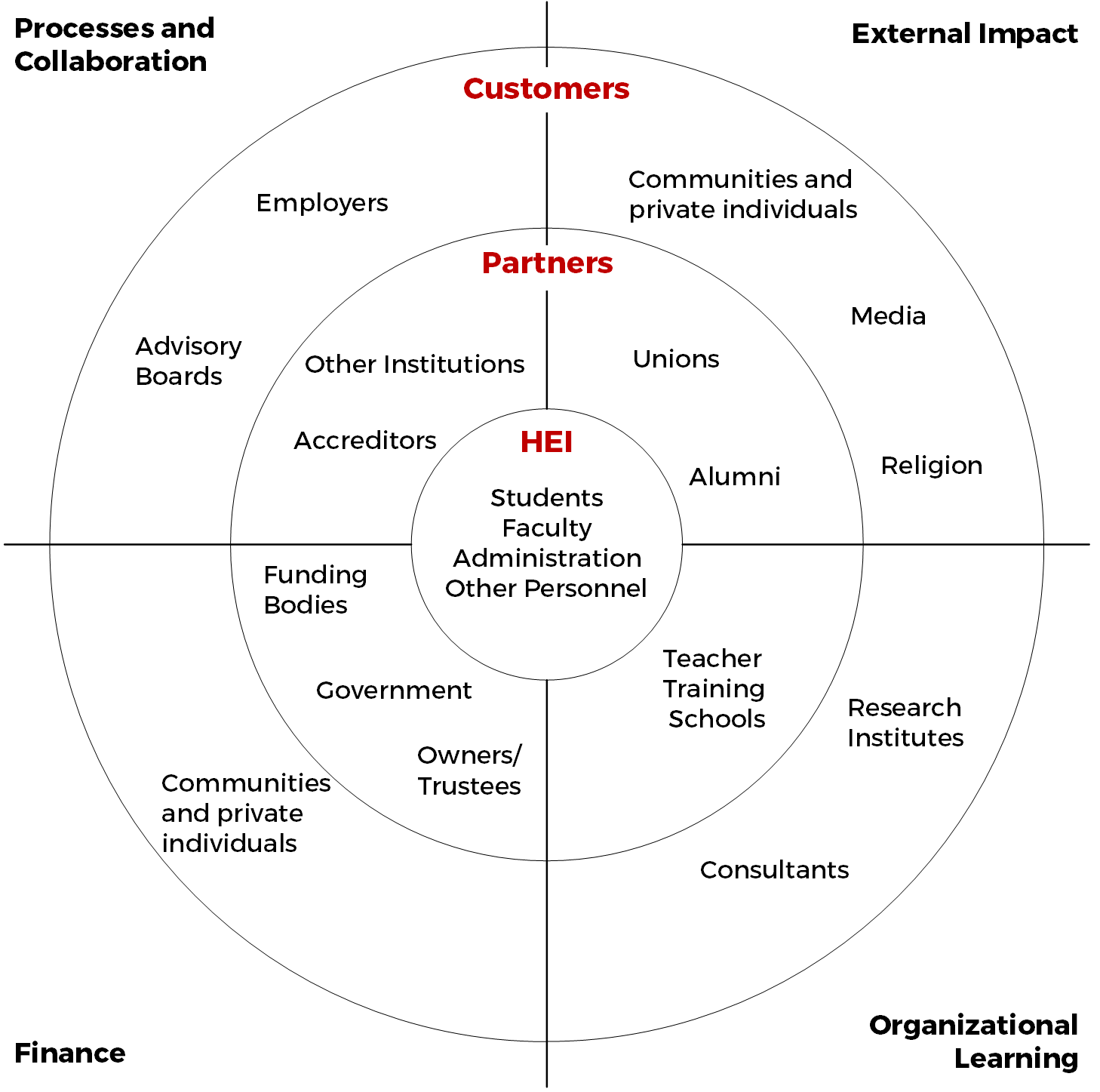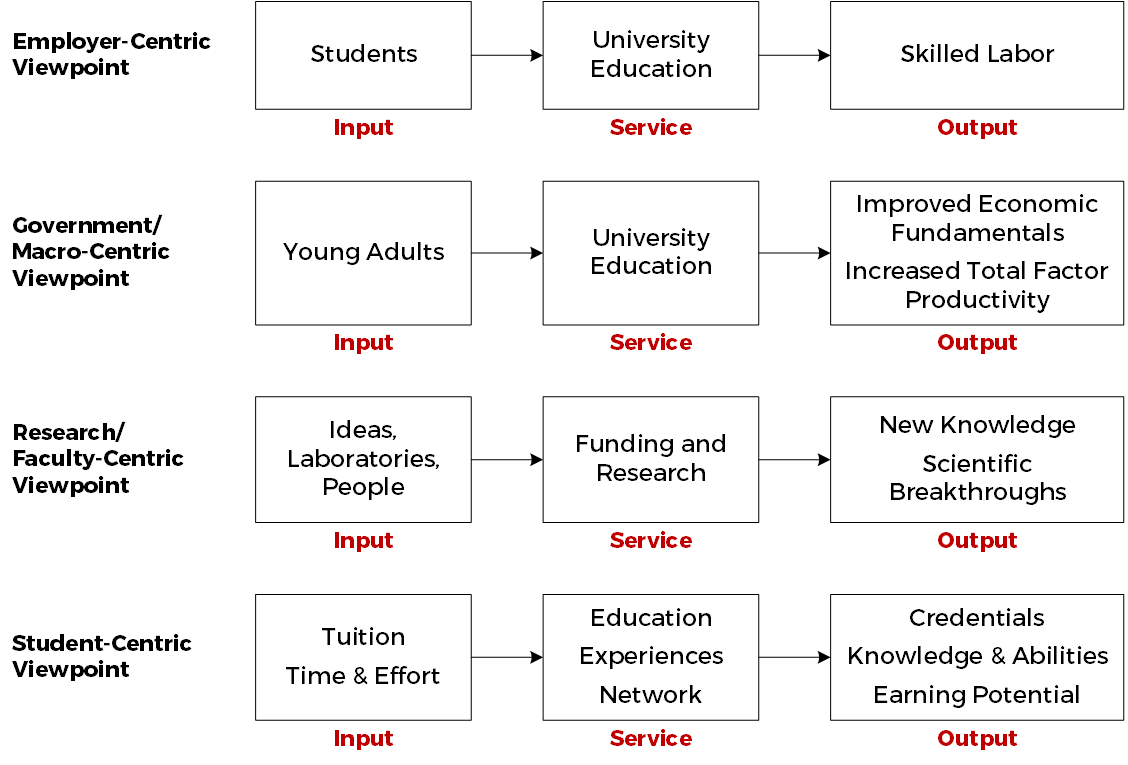
Treating Constituents as Customers
Bringing Focus back to the Student in Higher Education Decision-Making
Every year, millions of new and returning students head off their college or university, seeking a degree in higher education that will give them greater knowledge, experience, and lifetime earning potential. Numerous long-term studies have shown that individuals who achieve a higher education degree are have better health, income, and even happiness outcomes than those who don’t. Higher degrees are also associated with greater prestige and upwards mobility – education is a vital part of the American Dream.
Nonetheless, there are significant inefficiencies in the U.S. education system:
- Many students do not graduate, despite the U.S. spending among the most money as a % of GDP among developed countries;
- Four-year college degrees often do not directly prepare students for job skills, despite a renewed focus on STEM majors;
- Students are graduating with ever-increasing amounts of student loan debt;
- Many private and public colleges find themselves struggling financially.
The greatest impact of many of these issues is on the student constituents: their education and future well-beging is put at risk. A renewed focused by institutes of higher education on treating student constituents as customers can be a significant part of increasing educational effectiveness.
The Problem of Multiple Focuses
The crux of strategy is focus: organizational resources and attention must be dedicated to a relatively small number of objectives, and towards a relatively small number of stakeholder types. In higher education, the stakeholder map is complex and often focused on groups other than the student.
In one example, the stakeholder map here, adapted from Kettunen, et al, is divided into a Balanced Scorecard approach with four perspectives (external impact, finance, processes, learning), organized around three circles:
- Higher Education Institute
- Partners
- Customers
Notably, the Customers circle is distinct from the Students, signifying a methodological and systemic view of students as inputs and outputs of the higher education system.
Higher education leaders should be focused on identifying and prioritizing needs of constituents; determining the benefits, impacts, and risks of potential solutions; and defining execution plans.
How to Treat Constituents as Customers
In higher education, student constituents need to be viewed as the customer across all levels of the organization to help ensure effective and efficient educational outcomes. This can require a dedicated vision with strategic objectives tied to student educational success and accountability, including governance, and a multi-directional communication plan among students, school administration, and other stakeholder groups.
There is no one-size-fits all solution for student-focused education, and in some cases, certain universities may decide that there are higher priorities, such as academic research or profit maximization. Even so, there are a number of domains in which student constituents can be successfully viewed as customers for any institute of higher education, including technology. Some examples are listed below:
Cost of Education
Why It Matters
Colleges and universities need to ensure that education is affordable for students, and adequately delivers both monetary and non-financial value.
Examples of solutions include:
Organizational: Higher education institutes may need to carefully evaluate whether they can and/or should be partially or fully need-blind.
Technology: Student management systems can be configured with workflows and alerts to identify students who are at financial risk. These students can be advised to inform them of options and help them to be in a position to make the best decisions for their future.
Required Courses Unavailable
Why It Matters
Higher education institutes need to ensure that they are able to meet the basic needs of their constituents, particularly around availability and access of courses.
Examples of policies that can affect outcomes include:
Organizational: Some colleges and universities consider capping enrollment in certain degree programs based on course seat availability, and implement service level measurements to ensure that student course needs are met.
Career Planning and Readiness
Why It Matters
Institutes of higher education may want to consider whether their current strategy helps students to align their plans with desired outcomes, as well as with employment opportunities in the near-term and long-term.
Examples of solutions include:
Organizational: Institutes of higher education may want to consider how to rebalance their focus among different programs of study.
Technology: Student management systems, potentially aided by big data tools, can help identify optimal degree and career paths based on academic performance, student preferences, employment opportunities, and other factors.
Graduation Rates
Why It Matters
One identifiable segment of students who drop are are those who leave for financial reasons.
Examples of components of potential solutions include:
Technology: Student management systems can be configured with workflows and alerts based on financial status and on statistical risk factors for course failure that can then encourage academic counseling and tutoring.
Organizational: Instructor incentives can be more closely aligned with student outcomes.
Including the Constituent-Oriented Viewpoint
Institutes of higher education can and should have objectives that span far beyond simply educating students: they are a fundamental and critical component of the U.S. economy, and a source of major innovation. Nonetheless, the constituent viewpoint must be considered jointly with other objectives to ensure overall higher education success.
While employers are interested in qualified employees and faculty are often focused on research, student constituents provide different inputs and outputs to the higher education process. Design of business processes and technology systems should consider each of these factors.
Adapting the Customer Framework for Constituent Centricity
The Customer Centricity Framework from the American Marketing Association [AMA] is not a perfect solution for higher education, or even any business, but its core tenets can be successfully adapted for consideration in treating constituents as customers in higher education.
The Constituent Centricity Framework for Higher EDucation
Experience
Make the student experience academically and personally rewarding. Students who develop holistically are the most productive both during and after their education.
Communication
Promotions
Price
Loyalty
Build student loyalty during school through social experiences, and after graduation by guiding them towards successful career paths with no more than an appropriate amount of debt relative to their career potential. This will often lead to increased gratitude, school recognition, reputation, and alumni giving.
Assortment
Feedback
Want to Learn More?
If we didn’t answer all of your questions, or if you just want to chat about tackling challenges in Higher Education, feel free to send us a message.


